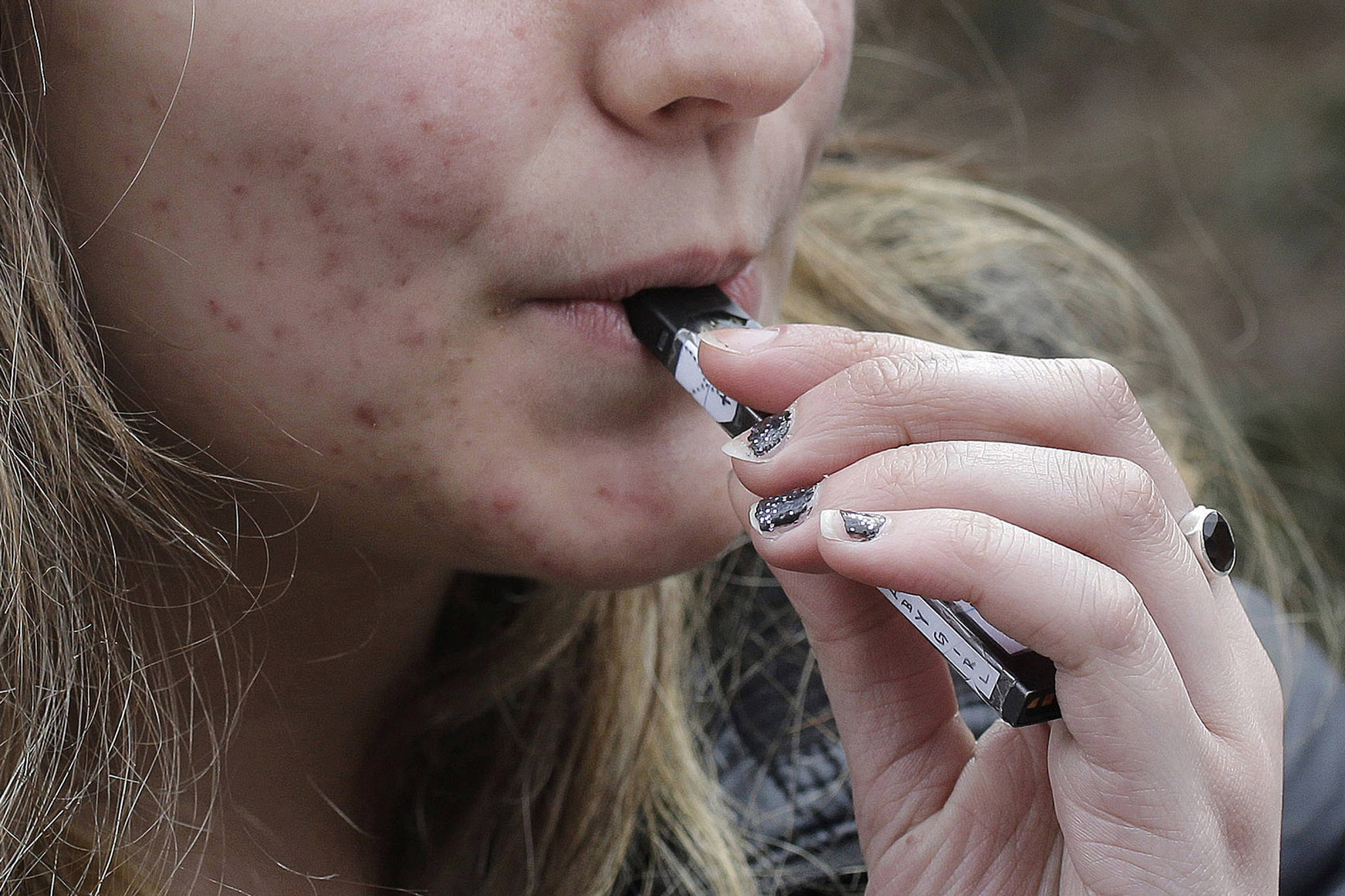Remember Joe Camel, the 1980s and ‘90s advertising mascot for Camel cigarettes? Or the Journal of the American Medical Association study that found children were just as familiar with the cartoon camel-man and his cigarettes as they were with Mickey Mouse? You might also recall the lawsuit that followed and how the ad campaign was eventually shut down because of Joe Camel’s appeal to children.
E-cigarettes are this generation’s Joe Camel. With kid-friendly flavors like mango and cool mint, and intriguing shapes that can look like USB sticks or even toys, e-cigarettes are alluring to young people.
In 2017 in Alaska, the number of high school students who had smoked at least one day in the last 30 days was at an all-time low — just 10 percent, nearly half the rate from a decade before, according to the Youth Behavior Risk Survey. That same year, however, 40 percent of high school students reported trying e-cigarettes at least once.
[Hannan proposes new tax on vaping products]
E-cigarette use has skyrocketed among youth, introducing a entire new generation to nicotine and possible further tobacco use. This is a serious public health concern for our youth.
What’s so dangerous about nicotine? No matter how it’s delivered, nicotine is highly addictive. E-cigarettes have helped some smokers quit traditional cigarettes, but e-cigarettes can deliver just as much nicotine or more, and have not been shown to be effective at breaking nicotine addictions.
A New England Journal of Medicine study found that e-cigarettes were more successful than other methods at getting smokers off cigarettes. However, after a year, 80 percent of participants who used e-cigarettes to quit smoking were still on nicotine, while only 9 percent of those who used other forms of nicotine replacement therapy (gums, patches, medication) still used nicotine.
[Alaska’s tobacco report card grade improves]
We know long-term nicotine use is linked with heart disease and an increased risk of certain cancers. It may increase the risk of stroke and chronic kidney disease.
One brand, JUUL, has pods that contain as much nicotine as a pack of cigarettes, but unfortunately many teens don’t know it. Nicotine is especially dangerous for young people whose brains are still developing. It can change the way brain synapses are formed and harm the parts of the brain that control attention, impulse control and learning. Emerging evidence shows nicotine addiction can strengthen the dopamine reward pathways that prime the brain for further addictions.
The vape fluid that produces e-cigarette aerosols is not harmless; we keep learning more about the heavy metals, ultrafine particles, and other toxic or cancer-causing substances contained in e-cigarettes and their possible long-term health effects. Exposure to highly concentrated e-cigarette liquid causes hundreds of poisonings every year nationwide, with more than half of those in children under age 5.
[Alaska approves regulations for marijuana consumption in retail shops]
What’s more, the devices themselves can be used to deliver marijuana or other drugs, and have been shown to have misleading labeling, and on occasions have exploded, causing injury.
What can be done about teen vaping?
While the U.S. Food and Drug Administration is in the process of implementing new regulations governing e-cigarettes, Alaskans should know it’s currently illegal for youth under the age of 19 to possess an electronic smoking product.
Enforcement is critical and so is education.
Health care providers, parents and adults who work with teens all play an important role in helping youth understand the risks of e-cigarettes. Teens need to learn the facts so they don’t fall prey to advertising, and can be a trusted source when sharing information with friends.
This is our generation’s Joe Camel and it’s up to all of us to keep Alaska’s youth healthy and safe.
• Dr. Lily Lou, MD, is a physician, board certified in pediatrics and neonatology, and is Alaska’s chief medical officer. Adam Crum, MSPH, is commissioner of the Alaska Department of Health and Social Services. My Turns and Letters to the Editor represent the view of the author, not the view of the Juneau Empire.

